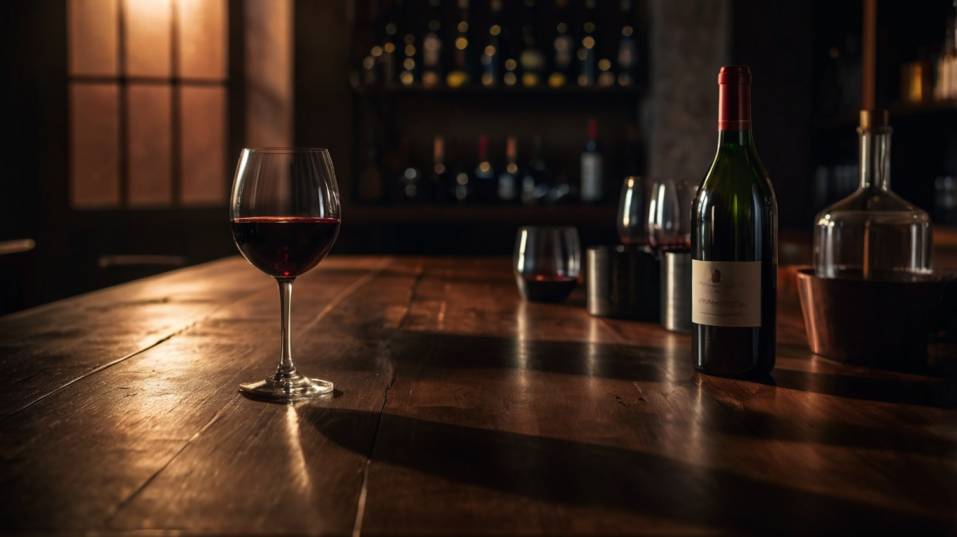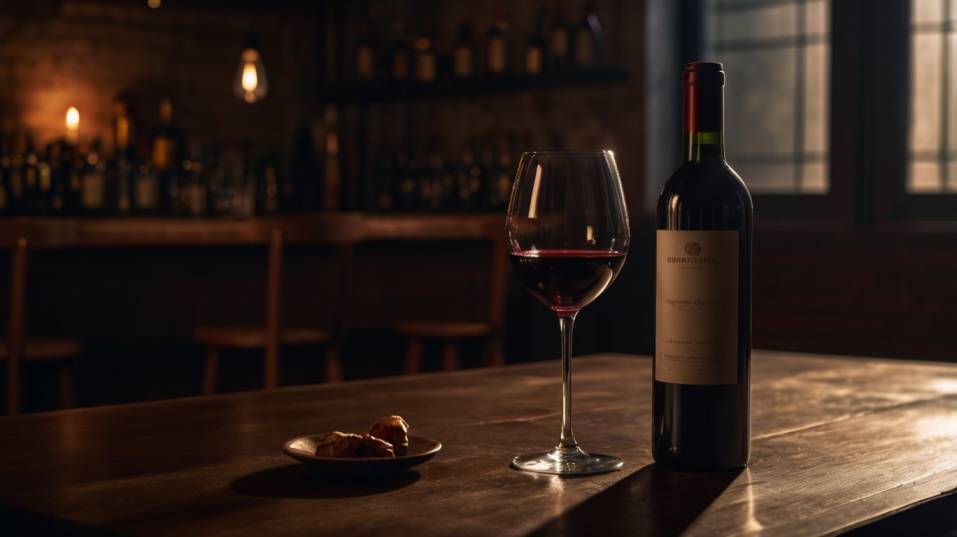Serving Temperature: Why It Changes the Taste
Discover how wine temperature shapes flavor. Learn to serve each bottle just right—no gear needed. Taste more, waste less, enjoy deeper.

Ever poured a wine that fell flat—and had no idea why? The answer might be temperature. Not the kind on a label or wine fridge, but the one in your glass.
Temperature affects aroma, flavor, even how a wine feels in your mouth. Get it wrong, and the wine stays quiet. Get it right, and everything opens up. Learning how to dial it in isn’t fussy—it’s the fastest way to make wine taste better.
Temperature Is a Flavor Tool
Wine is full of volatile compounds—aromatic esters, phenols, acids, and alcohol—all of which behave differently at different temperatures. When wine warms up, more of these compounds evaporate, which increases aroma and amplifies flavor.
But too much warmth, and the alcohol can overpower everything else. Chill a wine too much, and those same compounds get locked up. Aromas go silent. Tannins sharpen. Acidity takes over.
The goal isn’t to follow a strict set of rules. It’s to find the zone where the wine expresses itself fully and in balance—where the fruit, structure, and aromatics feel alive and intentional.
This balance is different for different styles. But once you tune into what serving temperature actually does in the glass, your tasting ability sharpens fast.
You don’t need to memorize a chart. You just need to start noticing what happens when a wine is too cold… or too warm… and how much better it gets when it’s just right.

Red Wines: Cooler Than Your Kitchen
Red wines are often poured too warm. “Room temperature” is the common guidance, but most rooms today hover around 70–74°F (21–23°C)—too high for most reds to show well.
Heat dulls fruit expression, exaggerates alcohol, and smooths over texture, making wines feel heavy or flat.
In contrast, reds served slightly cooler—between 58–65°F (14–18°C), depending on style—tend to show sharper structure, more focused fruit, and better aromatic lift.
Light-bodied reds
Like Pinot Noir, Gamay, or Barbera benefit from cooler serving temperatures—closer to 55–60°F. This brings out brightness and detail, especially in red fruit and floral notes.
Medium-bodied reds
Like Merlot, Zinfandel, or Sangiovese do well around 60–64°F. Chilling slightly tightens the wine’s texture and elevates balance, especially if the wine has moderate alcohol.
Full-bodied reds
Like Syrah, Cabernet Sauvignon, or Nebbiolo can handle 64–66°F, but still often benefit from a short stint in the fridge. Just 15–20 minutes can transform a bold, slightly overbearing glass into something more structured and expressive.
Worried about serving too cold? Let the wine sit in your glass for a minute. If the fruit and complexity deepen as it warms slightly, you’ll know you’re in the right zone.
White Wines: Let Them Warm Into Focus
If reds are too warm, whites are often too cold. Straight from the refrigerator—typically 37–40°F (3–4°C)—white wine can taste almost mute.
Texture becomes rigid. Aroma disappears. Fruit takes on a sharp, sour edge. What’s meant to feel generous and nuanced ends up tasting like a ghost of itself.
As white wine climbs to around 45–55°F (7–13°C), its character emerges. Acidity balances with texture. Fruit turns from tart to ripe. Aromatics—floral, citrus, mineral, or creamy—expand.
Aromatic whites
Like Riesling, Gewürztraminer, or Albariño benefit from a bit more warmth—closer to 50–55°F. This allows their layered aromas to open without feeling oily or loose.
Crisp whites
Like Sauvignon Blanc, Pinot Grigio, or unoaked Chenin Blanc should sit above fridge temp, around 45–50°F. You’ll still get freshness, but with more clarity and charm.
Fuller whites
Like Chardonnay (especially oak-aged), white Rhône blends, or white Burgundy often shine at 50–55°F. Here, texture plays a key role, and warmth allows creaminess, spice, or nuttiness to emerge.
Let your white sit out for 10–15 minutes before pouring, or take it from fridge to glass and track the evolution with your senses. As temperature shifts, new layers appear.
Sparkling Wines: Chilled, Not Frozen
With sparkling wine, chill matters for more than flavor—it also affects texture and bubbles.
Colder temperatures (around 40–45°F) keep the mousse tight and elegant. But go too cold, and the wine’s expression shuts down, showing mostly acidity and fizz.
Champagne and traditional-method sparklers
Show best around 45°F (7°C). Cooler temps preserve their structure, but allowing a few degrees of warmth brings out yeasty complexity and finesse.
Prosecco, Cava, and pét-nats
Can be served slightly colder—closer to 40–43°F. These wines thrive on freshness and clean fruit, so a brisk chill works to their advantage.
If a sparkling wine is so cold you can’t smell anything, give it five minutes in the glass. You’ll notice the flavor begin to widen as the wine reaches its ideal zone.
Rosé: A Moving Target
Rosé sits in between categories—delicate like a white, but often structured like a red. That means serving temperature depends on the style.
Pale, crisp rosés
Like Provence-style bottles taste best around 45–50°F. Cool enough for brightness, but not so cold that the texture disappears.
Deeper, fuller rosés
Like Tavel, Spanish Garnacha rosado, or Sangiovese-based styles can handle a little more warmth, around 50–55°F. You’ll get more berry fruit and structure without dulling the freshness.
Rosé changes fast in the glass, so it’s a great place to practice paying attention to how temperature affects texture and aroma.
Simple Techniques for Getting It Right
You don’t need a wine fridge or infrared thermometer. Just get comfortable adjusting your routine.
- If a red feels too warm, pop it in the fridge for 15–20 minutes before pouring. If you’ve already poured, a few minutes in a cooler environment or decanting into a chilled carafe can help.
- If a white feels too cold, take it out of the fridge and let it sit for 10 minutes. Swirl it gently in the glass or warm the bowl with your hand to speed things up.
- If you’re unsure, taste early, then again after a few minutes. Let temperature become part of how you explore a wine. It’s not just a setting—it’s an invitation.
Final Thoughts
Serving temperature is one of the most underrated tools in wine. It’s not complicated. It doesn’t cost anything. But it transforms how wine behaves—and how much you get out of every sip.
Once you start noticing how temperature shapes taste, you’ll never go back to one-size-fits-all pouring. You’ll know how to bring out a wine’s best traits and spot when it’s holding back.
You’ll taste more, waste less, and build a deeper connection with the wines you already love. So tonight, try something simple: chill that red a bit. Let your white breathe a little.
Pour two glasses of the same wine—one straight from the fridge, one rested—and see what reveals itself. The next step in your wine journey might be just a few degrees away.




